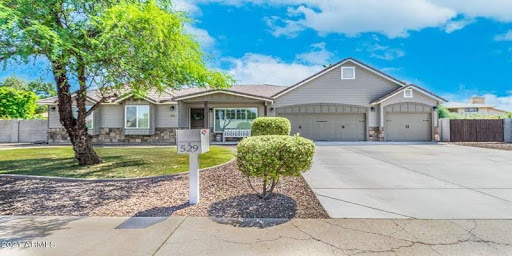The feeling of space in a home isn’t always about square footage—it’s about perception. Whether you’re preparing your home for sale or simply want to make your everyday environment feel more open and inviting, there are clever design strategies that can transform the way a home looks and feels. Creating a sense of space is part illusion, part function, and part psychology. The good news? You don’t need to knock down walls or undergo major renovations to make your home feel bigger and more appealing.
From lighting choices to layout tweaks, simple adjustments can dramatically change how your space is experienced. Even smaller homes can feel airy and spacious when designed with intention.
Light Is Your Best Friend
One of the most effective ways to make any room feel larger is to maximize natural light. Dark, shadowy corners tend to shrink a space visually, while well-lit areas open things up. If your home has large windows, avoid blocking them with heavy drapes or bulky furniture. Let the light in as much as possible—daylight not only brightens a room but also gives it dimension.
When natural light is limited, the right artificial lighting can make up for it. Layered lighting—using a mix of overhead fixtures, floor lamps, and table lamps—creates depth. A single overhead light can flatten a space, but light coming from multiple directions adds warmth and balance.
Strategically placed mirrors can also work wonders. By reflecting light and views, mirrors can give the illusion of extended space. Try placing a large mirror across from a window or behind a light source to double the impact.
Declutter and Reframe the Space
Clutter is the number one enemy of visual space. It makes rooms feel cramped and chaotic, even if they’re actually decent in size. Clearing countertops, removing excess decor, and scaling back furniture can instantly make a space feel cleaner and more breathable.
But it’s not just about getting rid of things—it’s also about reframing how each room is used. A dining room that doubles as a laundry folding station or a living room packed with toys can confuse potential buyers or visitors. Defining the purpose of each room and staging it accordingly helps people see the full potential of the space.
Even a small home can feel expansive if every corner is clearly defined and thoughtfully arranged. It’s not about minimalism for the sake of style, but rather about creating a visual rhythm that feels intentional and balanced.
Smart Furniture Placement
The layout of your furniture can make or break the feel of a room. Surprisingly, pushing all furniture up against the walls doesn’t always create more usable space. In many cases, pulling items slightly away from the wall and creating “zones” in larger rooms gives a sense of flow and structure.
Choose furniture that fits the scale of your room. Oversized sectionals or chunky coffee tables can overwhelm a small living room. Instead, opt for low-profile or multi-functional pieces—like ottomans with storage or nesting tables—that provide function without bulk.
In open-concept homes, area rugs can help anchor spaces and make them feel more organized. This simple trick creates a natural boundary between areas like dining and lounging, making each zone feel more purposeful and, by extension, more spacious.
Buyers walking through a home will pay close attention to how easily they can move through the space. That’s why homes staged with flow in mind often sell faster. If you’re looking to skip the prep and sell quickly, Houston cash home buyers offer a hassle-free way to close without needing to worry about staging, furniture, or deep cleaning. But for those presenting their home to the open market, smart design is a powerful tool that speaks volumes without a word.
Create Height and Continuity
Another subtle yet effective strategy is drawing the eye upward. Tall bookshelves, vertical art pieces, and floor-to-ceiling curtains can all create the impression of a taller room. Vertical lines add a feeling of height, which makes a room feel more spacious even if the square footage remains unchanged.
Similarly, using a consistent color palette throughout your home can make everything feel more connected and open. Light, neutral colors—think whites, grays, beiges, or soft blues—can make walls recede, giving the illusion of more space. Matching flooring from room to room also helps create continuity, avoiding visual breaks that make spaces feel chopped up or disconnected.
Paint finishes also play a role. Semi-gloss or satin paints reflect more light than matte finishes, subtly adding brightness and dimension. For smaller homes, this extra light bounce can make a real difference.
Bring Life Into the Room—With Intention
Once you’ve cleared and restructured your space, thoughtful touches like greenery, textiles, and artwork can bring personality without overcrowding. Plants, in particular, add life and color while also softening sharp corners or bare spots. The key is to choose a few well-placed pieces rather than filling every available surface.
Art should be scaled appropriately for the wall it’s on. A single large piece can often feel cleaner and more impactful than a gallery wall full of small frames. Similarly, textiles like throws, cushions, and curtains should complement the space rather than compete with it.
When these elements are chosen with care, they can elevate the look of your home while still preserving the sense of openness you’ve created. It’s about enhancing the feeling, not overloading it.
Final Thoughts
Making your home feel bigger and more appealing doesn’t require a major renovation or expensive design overhaul. It’s about adjusting how your home is seen and experienced. By playing with light, scale, layout, and style, you can shift the perception of space in your favor.
Whether you’re preparing to sell or simply want to fall in love with your home again, these techniques allow you to highlight what’s great about your space—and minimize anything that’s not. The process isn’t just about aesthetics; it’s about creating a home that feels better, works better, and makes a lasting impression.

